
Rio Grande do Sul is a state in the southern region of Brazil. It is the fifth-most populous state and the ninth-largest by area. Located in the southernmost part of the country, Rio Grande do Sul is bordered clockwise by Santa Catarina to the north and northeast, the Atlantic Ocean to the east, the Uruguayan departments of Rocha, Treinta y Tres, Cerro Largo, Rivera, and Artigas to the south and southwest, and the Argentine provinces of Corrientes and Misiones to the west and northwest. The capital and largest city is Porto Alegre. The state has the highest life expectancy in Brazil, and the crime rate is relatively low compared to the Brazilian national average. Despite the high standard of living, unemployment is still high in the state, as of 2017. The state has 5.4% of the Brazilian population and it is responsible for 6.6% of the Brazilian GDP.

The Ragamuffin War or Ragamuffin Revolution was a Republican uprising that began in southern Brazil, in the province of Rio Grande do Sul in 1835. The rebels were led by generals Bento Gonçalves da Silva and Antônio de Sousa Neto with the support of the Italian fighter Giuseppe Garibaldi. The war ended with an agreement between the two sides known as Green Poncho Treaty in 1845.
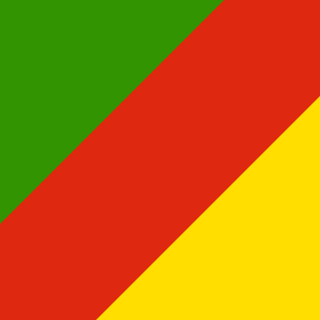
The Riograndense Republic, often called the Piratini Republic, was a de facto state that seceded from the Empire of Brazil and roughly coincided with the present state of Rio Grande do Sul. It was proclaimed on 11 September 1836 by general Antônio de Sousa Neto as a direct consequence of the victory obtained by gaúcho oligarchic forces at the Battle of Seival (1836) during the Ragamuffin War (1835–1845). It had a constitution adopted in 1843 and was recognised only by the United Kingdom, France, and Uruguay.
The Southern Military Command is one of eight Military Commands of the Brazilian Army. The Southern Military Command is responsible for the defence of the states of Rio Grande do Sul, Paraná and Santa Catarina.

Manuel Marques de Sousa, Count of Porto Alegre, nicknamed "the Gloved Centaur", was an army officer, politician and abolitionist of the Empire of Brazil. Born into a wealthy family of military background, Manuel Marques de Sousa joined the Portuguese Army in Brazil in 1817 when he was little more than a child. His military initiation occurred in the conquest of the Banda Oriental, which was annexed and became the southernmost Brazilian province of Cisplatina in 1821. For most of the 1820s, he was embroiled in the Brazilian effort to keep Cisplatina as part of its territory: first during the struggle for Brazilian independence and then in the Cisplatine War. It would ultimately prove a futile attempt, as Cisplatina successfully separated from Brazil to become the independent nation of Uruguay in 1828.

Manuel Luís Osório, Marquis of Erval was a Brazilian military officer, monarchist and politician. A member of the Imperial Army at the age of fifteen, he climbed all the posts of the military hierarchy of his time thanks to the soldier attributes that consecrated him as "The Legendary". He participated in the main military events of the late nineteenth century in the Río de la Plata region and is considered a hero of the Paraguayan War. He was declared patron of the Cavalry Branch of the Brazilian Army in 1962.

Cidade Baixa is a neighborhood of the city of Porto Alegre, the state capital of Rio Grande do Sul in Brazil. The neighborhood was created by the law number 2022 of December 7, 1959.
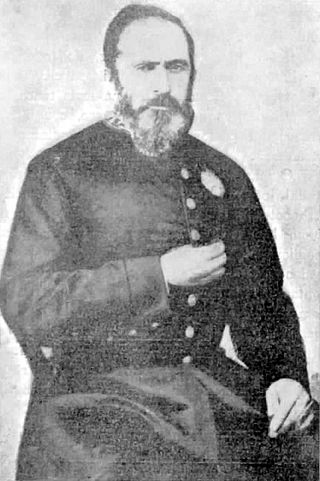
José Luís Mena Barreto was an army officer, politician and monarchist of the Empire of Brazil. He came from a wealthy family with a tradition of military service. José Luís entered the army in 1836, during the Ragamuffin War, a secessionist rebellion. The conflict lasted for almost ten years, and he fought in several military engagements at that time.

Bento Manuel Ribeiro was a Brazilian military officer, who participated in some key military campaigns of the history of Brazil such as the Cisplatine War and the Ragamuffin War.

The Battle of Azenha Bridge was the first battle of the Ragamuffin War, which took place on the night of the 19th to the 20th of September 1835. It gave way to the capture of Porto Alegre by the rebels on the following day.

Manuel Jorge Rodrigues, 1st Baron of Taquari, was a Portuguese-born Brazilian general and politician. A veteran of the Peninsular War, Rodrigues distinguished himself in many battles during that campaign fighting alongside the British. During the Cisplatine War he commanded the defense of the town of Colonia del Sacramento from an Argentine attack over the course of February–March 1826. Later on he also fought internal revolts in Brazil. Rodrigues briefly held the office of president of the Pará province during the Cabanagem revolt in 1835, after which he was sent to southern Brazil in order to fight the rebels in the Ragamuffin War, the longest civil war in Brazilian history, that broke out during the Regency period in the provinces of Rio Grande do Sul and Santa Catarina.
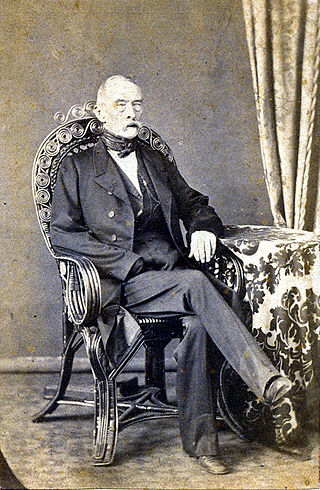
João Frederico Caldwell was a Portuguese-born Brazilian marshal and politician who was a military figure during the 19th century. He was known for his extensive career since the Pernambuco revolt and was one of the main leaders of the Paraguayan Invasion of Rio Grande do Sul during the Corrientes campaign of the Paraguayan War.
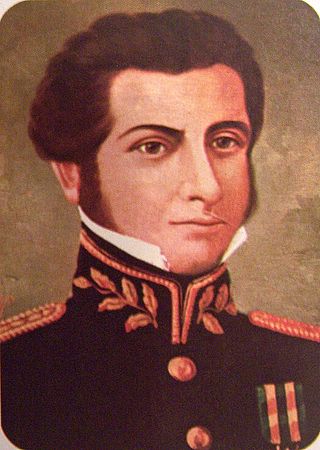
João Manuel de Lima e Silva was a Brazilian military officer and revolutionary leader, being the first general of the Riograndense Republic.
Porongos Massacre or Porongos Betrayal was the penultimate confrontation of the Ragamuffin War (1835-1845) and occurred on November 14, 1844. The battle was primarily responsible for ending the longest of Brazil's revolutions.
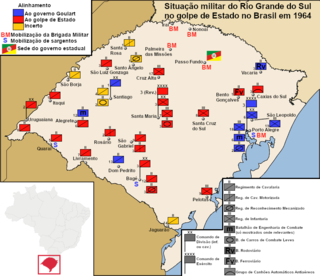
The Revolutionary 3rd Army was the unified command of the Brazilian Army forces that joined the 1964 Brazilian coup d'état in the South region of the country. It emerged on April 2 by the self-proclamation of General Mário Poppe de Figueiredo, in charge of the 3rd Infantry Division in Santa Maria, as commander of the 3rd Army. Revolution was the self-designation of the coup d'état. The 3rd Army was based in Porto Alegre and commanded by General Ladário Pereira Teles, loyal to the João Goulart government and opposed to the coup. With Goulart's departure from Porto Alegre and the triumph of the coup over his government, on April 3 Ladário gave up his command and Poppe de Figueiredo took over the 3rd Army in Porto Alegre, ending the duality of command.

Antônio Rodrigues Fernandes Braga was a Brazilian judge, county ombudsman, and politician. He was a general deputy to the General Assembly and the provincial governor of the province of Rio Grande do Sul from 2 May 1834 to 21 September 1835. He was the provincial governor at the outbreak of the Ragamuffin War in Rio Grande do Sul. He also served as a senator from Rio Grande do Sul and as a justice to the Supreme Court of Justice, nominated to the latter by imperial letter on 27 April 1870 and serving from 1870 to his death in 1875.

José Gomes de Vasconcelos Jardim was a Brazilian farmer, freemason, doctor, and militant. He was the president of the Riograndense Republic during the Ragamuffin War, succeeding his cousin Bento Gonçalves da Silva on an interim basis until the end of the war and the dissolution of the republic.
Marciano José Pereira Ribeiro was a Brazilian doctor and politician. He was the president of Rio Grande do Sul in two terms in 1835 and 1836.
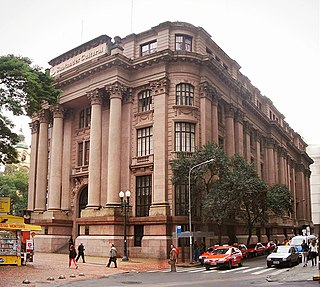
Banco da Província was the first commercial bank in the Brazilian state of Rio Grande do Sul. It was founded on July 1, 1858, by Lopo Gonçalves Bastos, João Batista Ferreira de Azevedo and José Antônio Coelho Júnior to facilitate their commercial transactions.
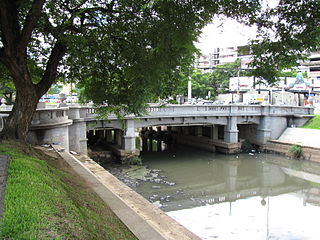
The Azenha Bridge is located in the Azenha neighborhood, in the Brazilian city of Porto Alegre, in the state of Rio Grande do Sul. It is situated on the corner of Azenha and Ipiranga avenues.

















